Síntesis y sintetizadores
Publicado el 21/06/2023
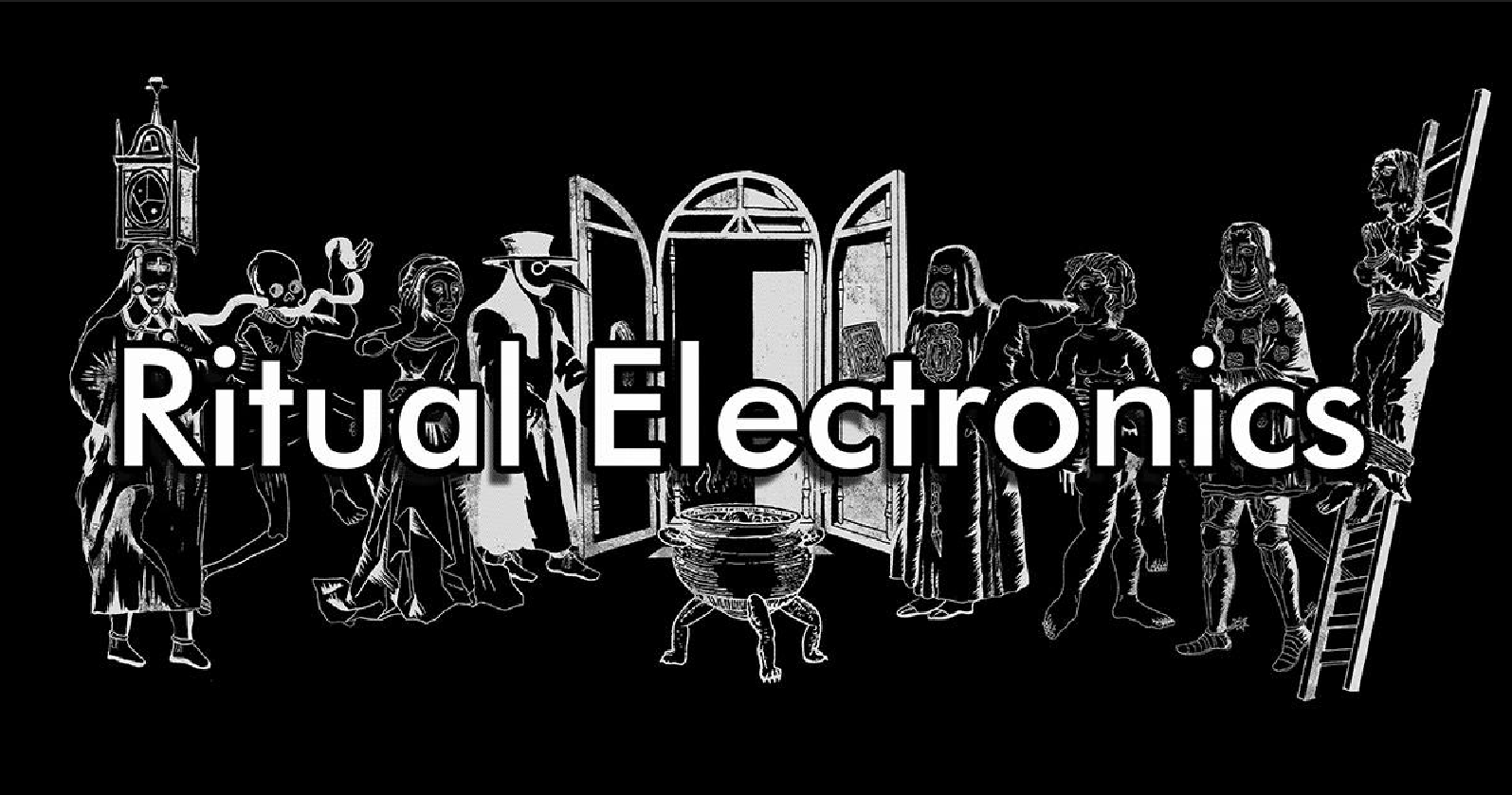
Ritual Electronics was officially born in 2017 after a few years of experimenting with sound modules and cases built, essentially, for friends.
The name comes from the musical practice of the Company founder (Nicolas Armand) who finds the music of great help to connect and disconnect from reality.
This, Nicolas explains, especially happens when the controllers are simpler than the keyboard.
The piano keyboard (as well as the frets for stringed instruments), according Nicolas, induces a sort of mental boundary that may divert from the connection with music and expressiveness.
With this concept in mind, Ritual Electronics realizes Eurorack units with both 1U and 3U sizes.
Let’s give a look to some of their devices that we had the chance to test at Roma Modulare 2022.
Anima is a dual voltage-controlled segments generator. It can be an AD or an ASR envelope, an LFO, a Digital Oscillator and even more.
It is capable of generating continuously evolving sonic modulations.
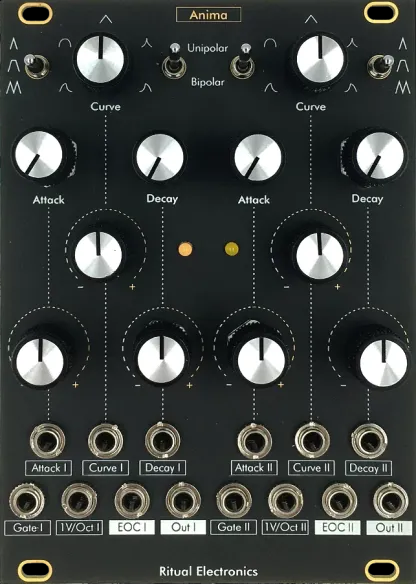
Anima draws its roots in the “west coast” analog function generators and updates them in the digital realm.
This take allows for extremely precise 1V/Oct tracking (10+ octaves) when in cycling mode, and for the control of the rising and falling segments curves without affecting timing with additional few more tricks.
Anima has three basic modes of operation:
The 1V/Oct input turns Anima into a very capable digital dual oscillator (when in cycle mode) with two types of frequency modulation and voltage controlled waveform crossfading.
Cross patching is highly recommended for harsh mayhem synthesis!
The 1V/Oct is also useful in “envelope mode” to shorten envelopes when an oscillator pitch gets higher thus recreating the behavior of acoustic plucked instruments.
The Curve parameter goes well beyond the usual Lin/Log control. It morphs smoothly between several curvatures (including the classic log, lin and exp) without affecting the rising and falling times.
When tweaked in envelope mode, Curve opens up new performance possibilities. Changing the length of a segment is not always the solution. Modifying the curve shifts the emphasis of the envelope for nuanced phrasing.
When Anima oscillates, one can think of Curve as a waveform crossfader. The speed and symmetry of the oscillation is set with Attack and Decay.
As usual with Ritual Electronics modules, each control has its dedicated attenuverter allowing for precise control and automation.
Let’s give a deeper look at Anima in this video:
Altar is a voltage controlled 3-pole (18dB/octave) state variable filter.
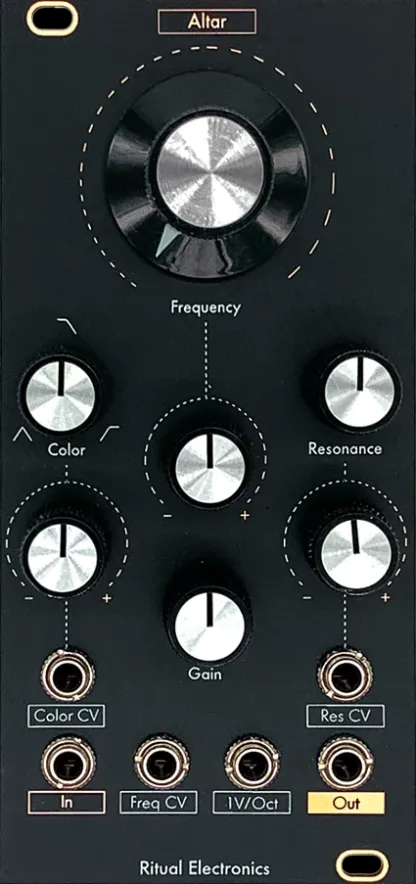
Altar filter configuration can be smoothly crossfaded from BP to LP to HP.
This unusual filter type arrangement brings out very nice harmonics and nuances.
It is really suited for CV control.
The CV input has an attenuverter.
Resonance is under voltage control with an attenuverter as well allowing for great timbre modulations.
It is particularly useful to create accent patterns à la 303 which boost the resonance a bit.
You can beef up the signal at Altar‘s input with the gain knob. It will distort the filter core for wild sounds.
The filter tracks 1V/oct for 4-5 octaves and can turn into a very sweet sine oscillator.
More on Altar in the following video:
Miasma is a voltage controlled distortion with a feedback that can be driven to self oscillation.
An interchangeable rectification diode set extends the sound possibilities of the module.
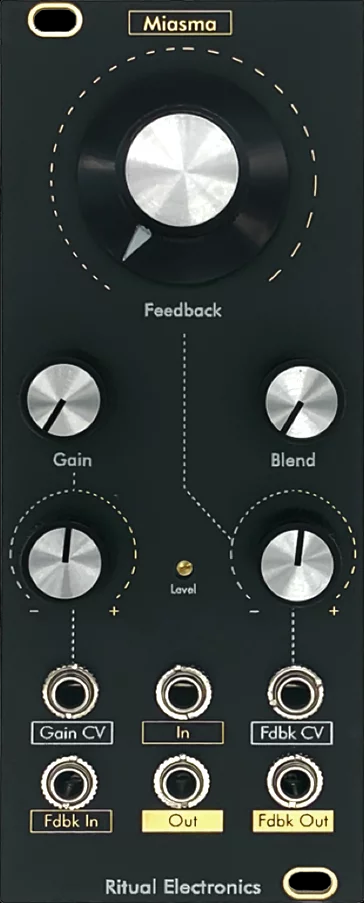
Miasma feedback path feeds the distorted signal back to the input with no phase inversion, causing the module to self-oscillate, even with no input.
The feedback path can be opened to send the signal through different effects for even more complex results.
The module’s clipping diodes are mounted on a header making it easy to swap them and craft the sound you want.
The module ships with six different diodes, from germanium to LEDs to allow the user to experiment.
Other components (diodes) can obviously be part of the game.
Check Miasma on duty in the upcoming video:
The 1U modules are less used by the modular community. The main reason is the format itself and the difficulty to have the modules properly enclosed in the case.
Browsing from the Ritual Electronics catalog we have:
The Diviser which is an analog clock divider with one output per division. It has odd & even division with 50% duty cycle.
The Guillotine which is a true stereo hard clipping distortion.
Its insane amount of gain can also be used as an instrument adaptor (guitars, basses, microphones, etc) as it can bring line and mic levels to modular levels.
The Répression, a feature packed CV controlled Comparator.
The Pointeuse, a CV controlled bidirectional analog switch that can be used as a momentary footswitch adapter for Eurorack.
Krach, useful to generate analog white and pink noise plus two filtered noises.
Flexibilité which is an expression pedal adapter.
Réseaux, a dual (passive) bidirectional mixer & attenuator.
Ritual Electronics also produces blank panels to fill the gaps in the Eurorack cases.
It is worth mentioning that those panels are engraved with pictures that, in our opinion, are related to the emotional world of the designers.
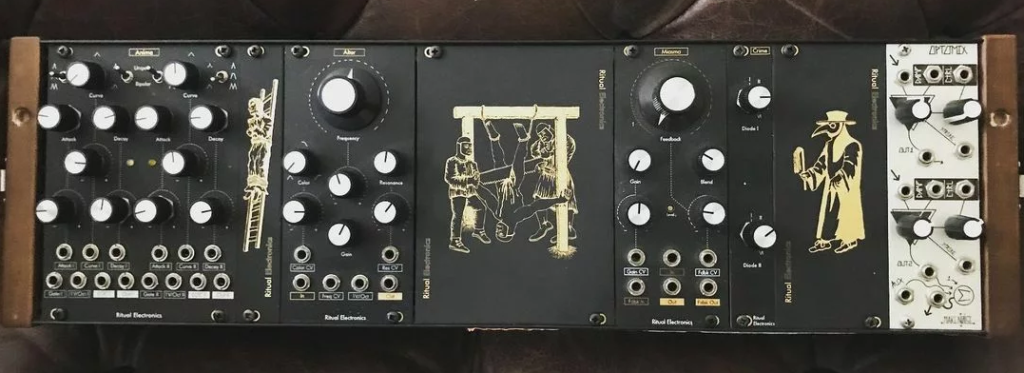
The picture above shows how the blanks can be used to keep the skiff clean while being sure that nothing dangerous happens under the hood.
Ritual Electronics realizes very interesting devices that reflect the artistic and musical concepts of the Company’s owner.
They are capable of delivering several effects and sounds that, for sure, will help you to define your very own musical world.
¡Únete a nosotros y obtén un 5% de descuento en tu próximo pedido!

Carro vacío